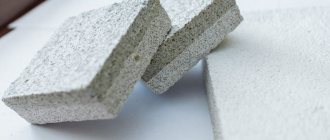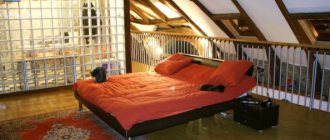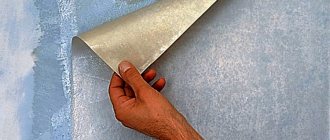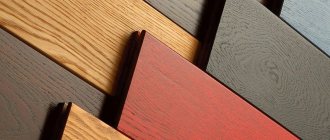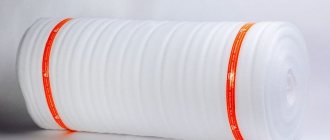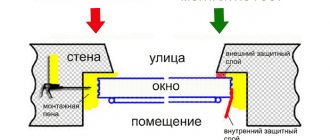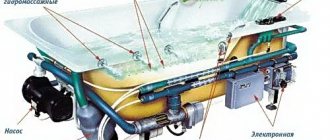Photo: Options for basalt wool. Author: Maxim Divanov Basalt or stone wool is one of the best insulation and soundproofing materials. Today the market offers a huge selection of materials with similar properties and qualities. Ecowool, glass fiber, slag wool - all these materials are similar to each other, but have different characteristics and are suitable for certain conditions of use. To understand what kind of wool is used for what, it is necessary to take a closer look at the composition, characteristics and features of the materials. It is these questions that we will try to consider in this material.
Specifications
Basalt wool, also known as stone mineral wool, is a fairly popular type of material that is used in modern construction. Due to its characteristics and features, it is used for heat and sound insulation of apartments, houses and technical premises. In addition to the insulating qualities of basalt wool, it has non-flammable properties. The material is absolutely not subject to burning or melting. When exposed to high temperatures, smoke and harmful substances are not released. Due to its non-flammable properties, basalt wool is used as insulation in residential buildings and public buildings.
Technical characteristics of basalt wool
Basalt wool is an effective sound insulator. The soft structure of the material allows it to absorb up to 45 dB of sound waves. This material is used for frame and frameless sound insulation. Basalt wool slabs can also be used for exterior wall decoration, since the fibrous structure allows air to pass through well. Mold and mildew do not form between the surface of the wall and the insulation. In addition, the structure of basalt slabs has good water-repellent characteristics, which allows the material to be used for exterior wall decoration.
Manufacturers of basalt wool offer customers material of various sizes and densities, which allows you to select the insulation for various purposes as accurately as possible. The only thing that is important to consider when choosing a quality material is that you should buy it only from a proven and reliable supplier who meets all production requirements. Before reaching the consumer, basalt wool undergoes all kinds of testing and inspections so that the buyer can purchase a high-quality product.
Basalt mats: characteristics of the sound absorption coefficient of BZM mats
Sound absorption coefficients
Basalt sound-absorbing mats or (BZM) are used to provide sound insulation in rooms and equipment. The mat consists of ultra-thin basalt fibers and a fabric base. The base can be glass, basalt or silica fabrics.
The BZM is marked, where the last letter indicates the fabric base used in the mat.
- BZM_S glass fabric;
- BZM_B basalt fabric;
- BZM_K silica fabric.
The difference between the mats is also in the maximum temperature conditions. BZM are used in various fields of industry and construction. The heat and sound insulation qualities of the material become indispensable for pipelines, gas turbine units, ventilation systems, etc.
How to strengthen
Properly improving existing sound insulation is quite a difficult task. It is not at all necessary, as they did for most of the twentieth century, to hang carpets. To increase the effectiveness of noise protection, care should be taken to install reliable windows and doors. There is no point in insulating the floor, walls and ceiling, leaving the old wooden window. But designs with multilayer double-glazed windows will come in very handy.
It is recommended to choose those options in which the internal glass is shifted relative to the geometric center. By increasing the thickness of the frame, the overall protection is improved.
When choosing windows, you should pay attention to the tightness of the rubber seal. If it immediately or after some time becomes covered with cracks or has dried out, it means that such a product needs to be replaced
Pros and cons of basalt wool
Photo: Stone wool.
Author: Maxim Divanov Basalt wool is considered a popular material, as it has many advantages compared to mineral insulation. The advantages of basalt wool include:
- High rate of sound and thermal insulation. If we compare the material with mineral analogues, the difference can reach half. Due to this quality, wool is used in the construction industry as the main element of sound insulation.
- Absolute fire safety. Basalt material is not subject to combustion, melting and the release of toxic fumes. It is for this reason that such insulation is used for residential premises of houses and apartments. The production of basalt wool is carried out at temperatures above a thousand degrees Celsius, so the fire-resistant characteristics of the material are very high.
- Strength of the material. Compared to other insulation materials, basalt slabs are quite strong and are not subject to mechanical stress or deformation. Due to the strength of the material, it is used for facade insulation of walls. The installed basalt slabs are reinforced and plastered, resulting in not only a reliable, but also an attractive finish. Cotton wool protects walls from the cold no worse than foam plastic, while air passes through it and the walls breathe. Due to these qualities, the popularity of basalt insulation is constantly increasing.
- Performance. The material does not rot even when used in an aggressive environment. Basalt thermal insulation will last for many years without losing its quality and thermal insulation properties.
- Easy to install. Unlike other materials, basalt wool is easy to install. Given the light weight of the material, even one person can handle it. Independent insulation of walls using basalt material will not only improve the characteristics of the walls, but also save on calling specialists.
Photo: Stone wool layers.
Author: Maxim Divanov As for the disadvantages, the material has very few of them, and the main one is fragility. If you bend a basalt slab, it breaks, so you need to be careful when transporting and installing it.
Types of basalt wool
There are several types of basalt wool. By and large, the differences are insignificant, but thanks to them you can select exactly the material that is needed for the job as correctly and accurately as possible. In fact, basalt wool has the following types:
Photo: Stone wool layers. Author: Maxim Divanov
- Soft. This material has a relatively low density and is recommended to be used where there are no heavy loads. This insulation is suitable for ventilated facades, soundproofing walls using the frame method, as well as similar types of work. The soft structure of wool is obtained not due to the loss of material qualities, but as a result of using thinner fiber.
- Medium hardness. Medium-density basalt wool is used in the formation of ventilated facades. In fact, it can be used in the same way as soft material, but there will be an overconsumption of material, and in production and in home use, overconsumption leads to a loss of money.
- High rigidity. This material is applicable in cases where the insulation is exposed to large mechanical loads. It is this wool that will be used for insulating the facade with further reinforcement and plaster. Cotton wool can withstand high loads without losing its shape and characteristics. Also, hard basalt wool is used for insulating floors with further screed filling.
- Basalt wool with foil base. This material is considered the most effective heat insulator. A layer of cotton wool retains heat, and thanks to the foil, warm air returns to the room. When mounted to walls, the foil must be in contact with the surface; only in this form is it considered most effective. The scope of application of the material is quite wide, because it can be used for various purposes.
The only difference between basalt wool is its thickness. Depending on this indicator, the characteristics of the material may vary. The thicker the layer of cotton wool, the better it retains heat. For use in apartments, they mainly use material with a thickness of no more than five centimeters. This is quite enough to get the expected effect of sound and thermal insulation. Basalt wool is produced in rolls and slabs. Depending on the need, you can choose the most suitable option.
Photo: Roll of stone wool. Author: Maxim Divanov
The largest manufacturers represented on the market in Russia
It's no secret that the positive reputation of the manufacturer is a guarantee that the purchased product will certainly be of high quality and will correspond to all the declared properties. Today there are several large manufacturers on the market, among which the following are worth noting.
is a world leader in the production of thermal and sound insulation based on stone wool. The company's product range is so extensive that it allows you to choose a material that is ideal for use in any conditions. Today the company includes 28 factories in 18 countries, and its products are widely represented on all continents, incl. in Russia.
ROCKWOOL- IZOVOL is a leading Russian manufacturer of basalt slabs. The range includes a huge selection of products, so you can choose the material for any conditions. In addition, the company’s specialists are always ready to advise on the best option, and the products are presented in all regions of the country . The manufacturer’s website has a convenient system for calculating the required thickness of a basalt slab with a clear interface and visual results. She takes into account all the features of the room, down to the type of heating, and ultimately advises which stoves are optimal in this case.
- Bogdanovichi Mineral Wool Slabs Plant LLC is a modern enterprise that uses the latest technologies and equipment for the production of basalt slabs produced under the Izba brand. Italian equipment is used to manufacture products. In addition, full control is carried out at all stages of production, and all finished products have quality certificates. The range includes a huge number of items of thermal insulating basalt slabs intended for use in various fields. For the convenience of users, each type of product received an appropriate name, which suggests the possibilities of its use. Each type of product is accompanied by all the necessary documentation and extensive information with its technical characteristics.
is a modern company that produces a huge amount of building materials. Vast experience since 1992, the use of modern European equipment and strict control over production technology have made it possible to achieve enormous quality of manufactured products, which have proven themselves not only in the Russian market, but also beyond its borders. Among the heat and sound insulating materials produced by the company, there are basalt slabs, which are presented here in several types with different product densities.
TechnoNikol Corporation- CJSC Izorok is a company located in Russia, but using 100% foreign capital. It is located in Tambov, on the territory of a plant built in the 80s. After its modernization, they began to produce thermal insulation materials, incl. and basalt slabs. The range includes material with different densities, and specialists are always ready to provide advice. Sales are carried out in all regions of the country.
- ECOVER is a relatively new player in the domestic market of thermal and sound insulation. The opening of the plant in the Sverdlovsk region took place in 2010, and now it is a young modern enterprise that specializes in the production of basalt thermal and sound insulation. The range includes slabs with different parameters, among which you can definitely find exactly what you need.
The article was written for the site.
Tags: Sound insulation, Wall insulation
Application of basalt wool
As mentioned earlier, basalt wool has a fairly wide range of applications. It is used for insulation of house facades and internal insulation for its characteristics and qualities. A house insulated with this material will keep it warm in winter and cool on a hot summer day.
Basalt slabs are also used as sound and noise insulation. The material perfectly absorbs airborne and vibration sounds due to its soft fibrous structure. Using this insulation, thermal insulation of pipelines for various purposes is carried out. If a pipeline is insulated, the material used is a cylindrical slab consisting of two halves.
Comparison with analogues
Photo: This thing will be quiet.
Author: Maxim Divanov Many people confuse basalt wool with other mineral thermal insulation materials. The similarity lies in the fibrous base, and that’s basically where it ends. Each type of insulating wool has its own characteristics and characteristics that affect the area of application. The difference between basalt wool and analogues lies in the use of different raw materials. The basalt slab is based on volcanic rock. During production, raw materials are crushed into small fractions and further heated to more than 1000 degrees Celsius. The material melts and becomes viscous, after which it is blown in a special air turbine to produce thin fibers. Another difference between basalt wool is that it is produced in slabs and rolls.
Laying Isolon in a concrete floor
Isolon 500 is used for floor insulation, including for pouring into concrete screed. The work is carried out as follows:
- The concrete floor is cleaned of old coatings, debris and dirt.
- Cracks, potholes are sealed, and significant unevenness is eliminated. The floor should not have sharp parts, as they will damage the insulating material.
- Izolon 500 is laid on the floor in one direction. The rolls are laid with an overlap of 10 cm. The joints are glued to make the insulating layer airtight. Be sure to make overlaps on the walls above the concrete pouring level.
- A reinforced frame (metal mesh) is laid.
- Concrete solution is poured.
Article on the topic: Why do we need soundproofing panels for walls (ZIPS, ISOPLAAT, ISOTEX)
If necessary, at the client’s request, the plant will produce polyethylene foam insulation, backed with fabric, metallized with PET films, foil, or painted in any color or embossed. To all this it is possible to add a fire retardant to reduce the flammability of the material.
FAQ
When choosing insulation for a home, the question often arises of how safe basalt wool is. Taking into account the specifics of production, the material is made from environmentally friendly raw materials and cannot negatively affect human health and well-being. It is also worth noting the fact that basalt wool is a non-flammable material, so it also protects the room from fire.
Photo: Basalt wool. Author: Maxim Divanov
People are also often interested in what criteria should be used to choose insulation for walls in an apartment. It is worth understanding that the thicker the material, the higher its thermal insulation qualities, however, too much thickness will reduce the area of the room. The optimal slab thickness for walls in an apartment is considered to be five centimeters. This thickness will be enough to retain heat and limit the penetration of extraneous sounds.
Basalt wool or ecowool
Basalt or stone wool has some similarities with ecowool. The thermal insulation qualities of one and the second insulation depend on the density of the product. Basalt wool is made from rock, which makes the material completely non-flammable. In the case of ecowool, it is considered a product of recycling paper waste. Fillers are added to processed raw materials to prevent rotting and burning. The structure of the basalt slab has a solid base and can be installed under various conditions. As for ecowool, it is free-flowing, so a certain system is required during installation, so making thermal insulation yourself will be problematic.
Basalt wool or mineral wool
All materials have both pros and cons. To figure out which is better, you need to consider the characteristics of the materials. Basalt wool is made from rock by melting. In terms of thermal insulation properties, basalt wool is better, since the structure of the materials has a significant difference in the number of fibers and loose structure. Of course, it’s impossible to say for sure that basalt wool is better, but according to some criteria it is still superior to mineral wool.
How to make it yourself
Technologies for installing sound insulation strongly depend on what kind of material is chosen. Thus, it is advisable to place plasterboard sheets on smooth, crack-free walls, covered with a layer of plaster. If the wall is a stable source of noise, you cannot place gypsum boards close to it, only attach them to adjacent walls and windows. Then the mounts will still conduct external sounds. Polyurethane foam will help fill the gaps separating the plates from each other.
To install ZIPS, you will have to make auxiliary holes. If you add ecowool panels manually, you will also be able to provide thermal insulation. Rolled materials based on absorbent films are attached to smooth and leveled walls; bustylate is used for attachment.
Before starting soundproofing work, all sockets are disconnected and removed, and the holes that appear are filled with non-flammable materials, covered with a quick-drying mixture. Next comes the turn of laying sound insulation in places where the pipes touch the wall.
